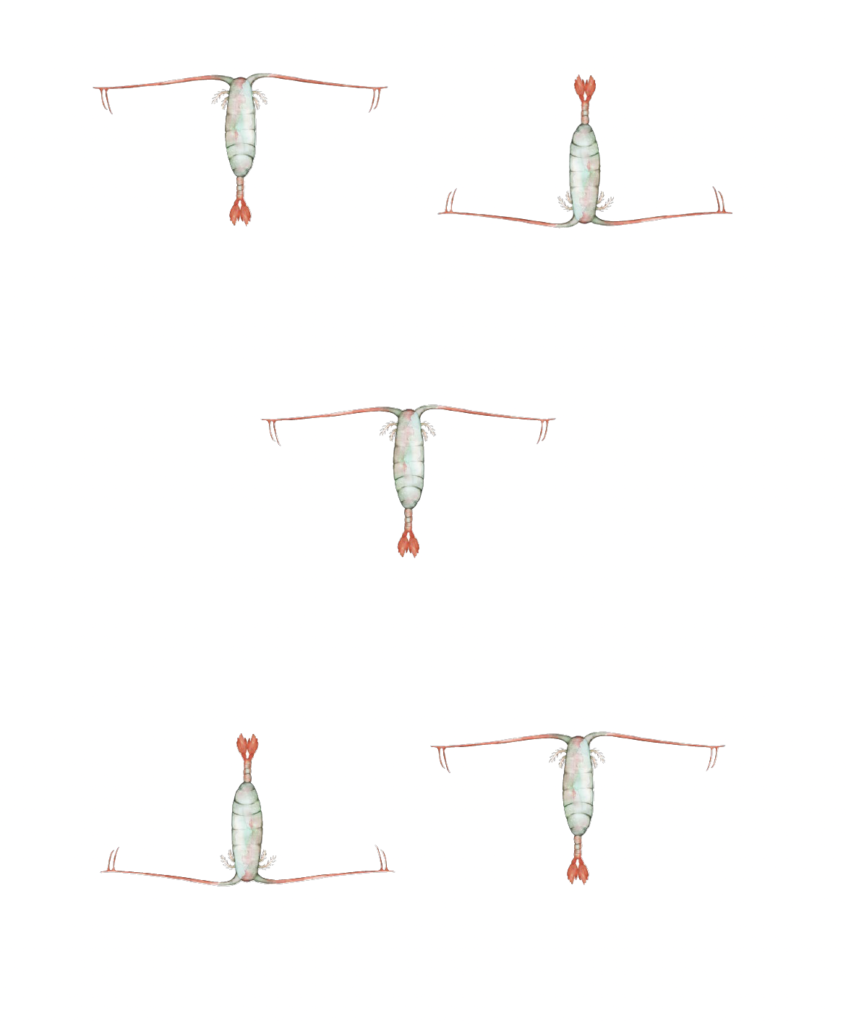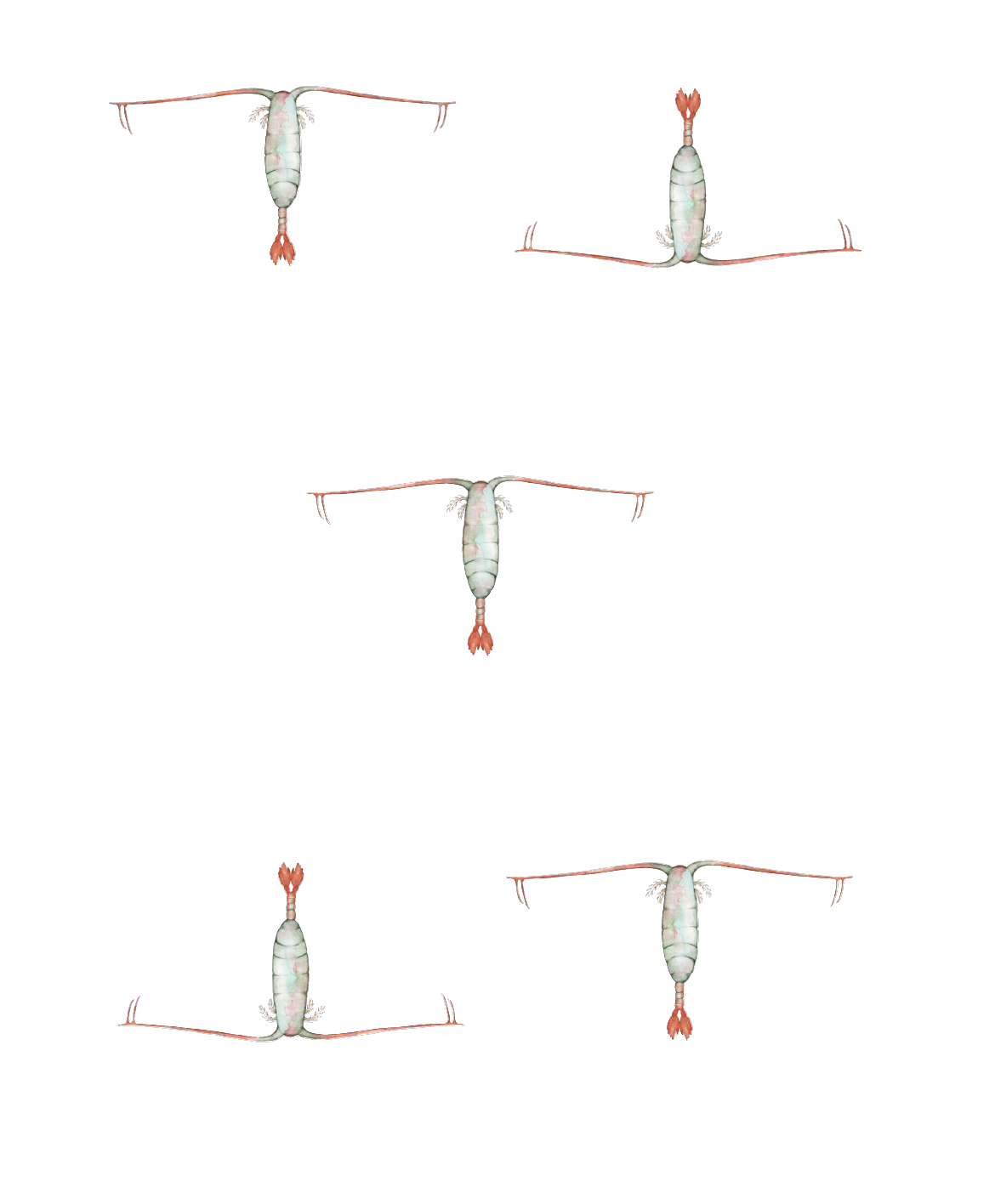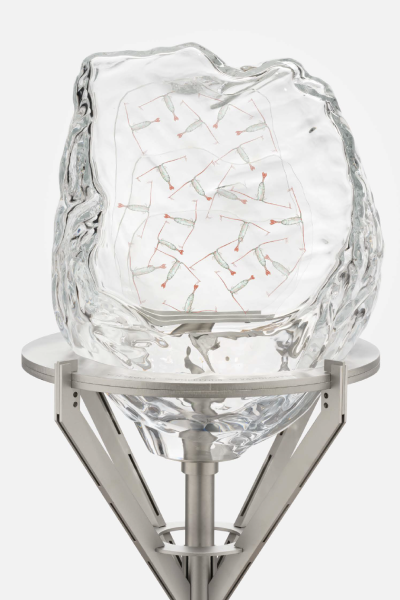
THE COPEPOD
The copepod is the most numerous multicellular animal in the world. It is central to the food web in the Arctic.

In the Disko Bay and the Icefjord it is especially fatty and almost twice as big as copepods elsewhere.
In spring it eats itself fat to be prepared for the long winter at the bottom of the sea with no food.
What does it mean that the copepod is central to the food web?
Why is the copepod bigger in the Disko Bay and the Icefjord than elsewhere?
What are the algae called that the copepod eats itself fat on in spring?
In winter it is pitch-dark in the Icefjord and the Disko Bay. Some microscopic algae have adapted so that they can live under the ice.

Phytoplankton are algae suspended in the water. Ice algae grow right under the ice. In springtime when the sun breaks through the ice, they bloom.
The algae conduct photosynthesis. Even in the very dark and cold environment they are able to absorb enough sunlight to cover their need for energy.
Learn more about algae.
What makes the algae grow?
The algae have adapted to life under the ice. What does the concept adaptation mean?
Find names and pictures of other algae.
The copepod is the most numerous multicellular animal in the world. It is central to the food web in the Arctic.

In the Disko Bay and the Icefjord it is especially fatty and almost twice as big as copepods elsewhere.
In spring it eats itself fat to be prepared for the long winter at the bottom of the sea with no food.
What does it mean that the copepod is central to the food web?
Why is the copepod bigger in the Disko Bay and the Icefjord than elsewhere?
What are the algae called that the copepod eats itself fat on in spring?
In winter it is pitch-dark in the Icefjord and the Disko Bay. Some microscopic algae have adapted so that they can live under the ice.

Phytoplankton are algae suspended in the water. Ice algae grow right under the ice. In springtime when the sun breaks through the ice, they bloom.
The algae conduct photosynthesis. Even in the very dark and cold environment they are able to absorb enough sunlight to cover their need for energy.
Learn more about algae.
What makes the algae grow?
The algae have adapted to life under the ice. What does the concept adaptation mean?
Find names and pictures of other algae.




